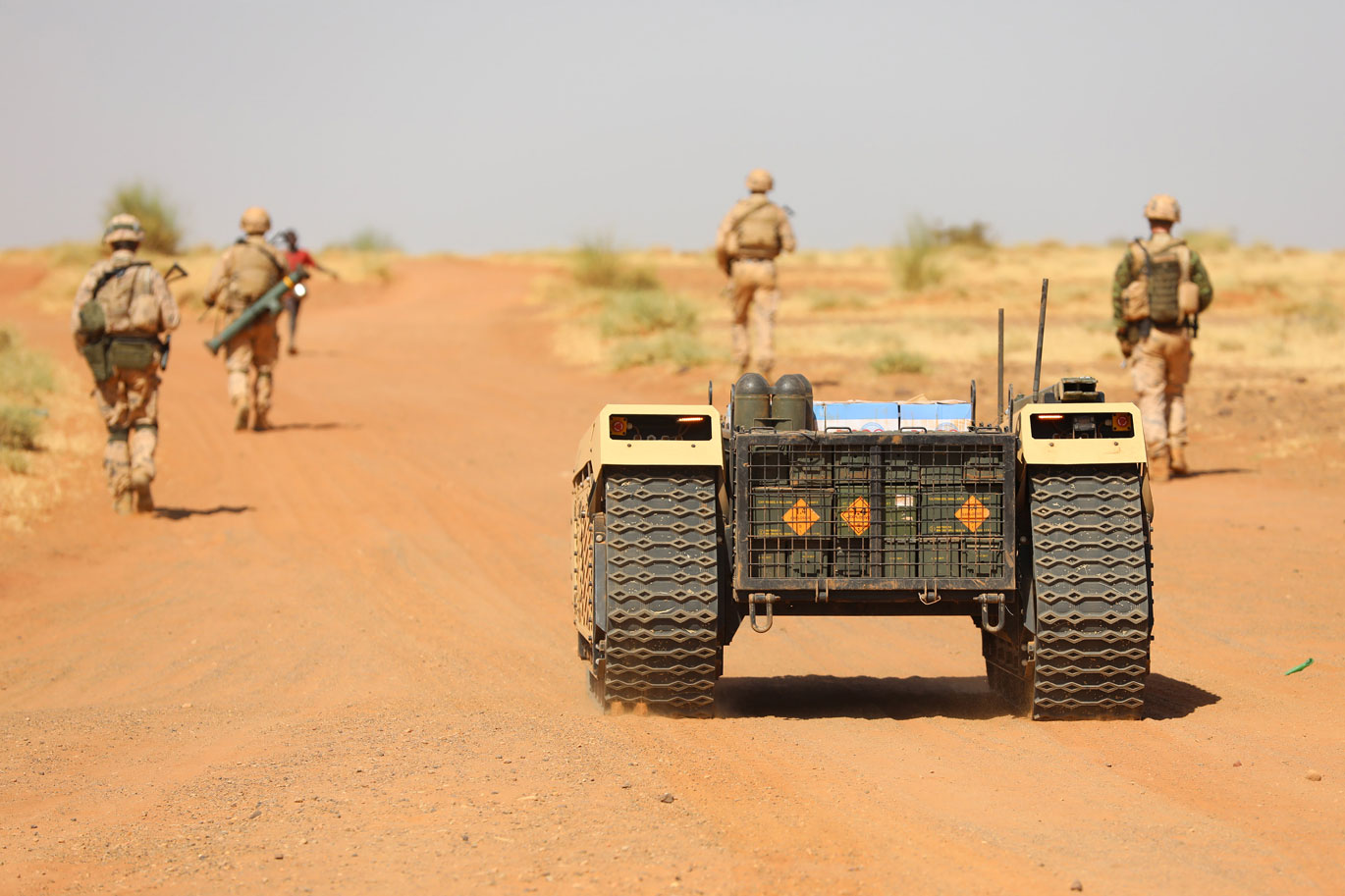UGVs On the Battlefield: Not A Question of If, But When
The forgotten war in West Africa against Islamic militants is being used as a testbed for unmanned ground vehicles by Estonia's Defence Forces.
Anita Hawser
05 May 2020

The fight against Islamic extremists in the Sahel regional of Subsaharan Africa has been waged by French forces and European allies for the past six years, but to the wider public it is a largely forgotten conflict. At the height of the Islamic terrorist threat, French Armed Forces first deployed to the region in 2013, as part of Operation Serval in Mali, which in August 2014 became Operation Barkhane, a counter-terrorism operation encompassing countries such as Mali, Niger and Burkina Faso.
Operation Barkhane involves approximately 5,000 French forces working alongside local forces and other operations, including the G5 Sahel Joint Force (FCG5S), which comprises troops from Burkina Faso, Mali, Niger, Chad and Mauritania, and MINUSMA, the UN's stabilisation mission in Mali.
Despite the continued presence of multinational forces in the Sahel region , terrorist groups continue to establish a foothold, and a lack of training and suitable equipment remain a challenge for the G5 Sahel Joint Force. In a November 2019 UN Security Council report, Secretary General Antonio Guterres reported that the security situation had continued to deteroriate, with attacks by terrorist groups against civilians and security forces and persistent violence.
Barkhane is a largely French-led mission, but it has garnered some international support in the form of troops and equipment from other European countries, including Estonia, which has almost doubled the size of its forces deployed in the region from 50 to 95 troops. Countries like Denmark and the UK have contributed equipment such as Merlin and Chinook helicopters.
Estonian Defence Forces (EDF) have used their presence on the ground in Mali to test entirely new and innovative pieces of equipment such as Milrem Robotics' Tracked Hybrid Modular Infantry System, or THeMIS, unmanned ground vehicle (UGV). Milrem recently announced that TheMIS had successfully completed its first deployment in Mali. The THeMIS was initially deployed to Mali in April 2019 with the EDF.
Up until April this year, the vehicle was regularly used during foot patrols by Estonian soldiers and for transporting supplies within their base. In total, three Estonian platoons used the vehicle during their deployment. The EDF said the UGV also remained operational after a vehicle-borne IED attack, comprising 200 kilos worth of explosives, took place in close proximity. But its greatest utility was operating in confined, narrow and soft terrain.
“Partitioned urban areas can be challenging, and one cannot always depend on armoured personnel carrier (APC) support,” said Lt Col. Sten Allik, Senior Staff Officer of the Estonian Defence Forces. “The opportunity to bring along a half-ton of ammunition and water to places unreachable with an APC added great value to patrols and enhanced combat capability.”
In addition to carrying water, food, ammunition and other equipment, EDFs said the UGV could also support units with observational and casualty evacuation capabilities. The TheMIS can also provide fire support if armed with a 12.7 mm heavy machine gun or Javelin missile. It can be transported by a Chinook or towed by an APC or infantry fighting vehicle.
Allik said the THeMIS surprised the EDF with its ability to withstand the harsh heat and terrain. During its deployment to Mali, the THeMIS traversed 1,200 km of terrain comprising lava rock soil and withstood temperatures up to 50 degrees Celsius in the shade. The UGV was operational for more than 330 hours.
“The arrival of unmanned ground systems on the battlefield is not a question of if, but when,” said Lt. Col. Allik. “I have seen, both in Estonia and Mali, how the unit's way of thinking changes when innovative technology is actually tested and made meaningful.”
Although the EDF’s experience with the THeMIS was positive, there is always room for improvement, said Kuldar Väärsi, CEO of Milrem Robotics. “However, after this experience in Mali, we are confident that the THeMIS is more than capable of supporting operations in extremely hot climates.”
In future, the EDF wants to use TheMIS, together with additional ISR, communication support, jamming, and remote weapon system capabilities. “The possibility to detect and neutralise the enemy or an explosive device from a distance is a crucial capability,” said Lt. Col. Allik. “It is easier to risk the vehicle than a human life. If we can reduce the risk to life in combat situations, we can increase operational speed.”
Milrem Robotics will continue to support the EDF in mission areas in the future and is currently preparing for possible future deployments as early as the end of 2020. Its UGV platform currently forms the basis of 14 UGV projects in EU Countries.